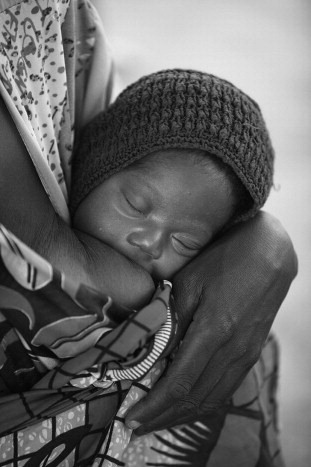Is pregnancy getting safer for women? It depends. It depends on where a woman is born, her social class, ethnic group or other marker of social and geographic positioning. While specific changes in medical techniques or fashions may theoretically improve or worsen the risks for individual women everywhere, from a public health perspective maternal mortality remains the indicator of population health that reveals most starkly the profound inequities of our time.
For decades now, estimates of lifetime risk of maternal death have captured the gulf between women in the poorest countries and those in the wealthiest: in sub-Saharan Africa, women have a lifetime risk of 1 in 16 of dying in pregnancy and childbirth, while in Europe they run a dramatically lower risk of 1 in 2,400.Citation1 Newer techniques use data from Demographic and Health Surveys to estimate disparities within countries between the highest and lowest wealth quintiles, with analyses showing as much as a six-fold difference in maternal mortality ratios.Citation2 There is a critical distinction between countries with “massive deprivation” (in which the elites have access while the great majority of the population is excluded) and countries with “marginal exclusion” (in which most of the population has access, while only the poorest, most disadvantaged are excluded). This distinction helps put the disparity between the highest and lowest quintiles into overall perspective and clarifies the nature of underlying systemic failures – and the very different strategies needed to tackle them.Citation3
While socio-economic inequity largely determines which groups of women run the greatest risk when they become pregnant, gender inequity helps make it acceptable to dismiss maternal mortality and morbidity as too rare, too complicated, too stubbornly unchanging and hard to measure for serious attention and investment. The inclusion of maternal mortality ratio as the target for Millennium Development Goal 5 encourages rhetorical handwringing about persistent maternal mortality and ensures that it gets into Road Maps and national plans. But implementation on the ground requires a level of focus, commitment to systemic change, capacity-building, long-term investment and patience that is rarely rewarded in practice. And so standard approaches to public health policymaking and aid effectiveness – approaches that continue to emphasise quick, high impact, lowest unit cost interventions – quietly sanction marginalisation of maternal mortality.
Yet there are now some reasons to be cautiously optimistic. First, growing consensus around key interventions and measurement techniques and – equally important – a growing body of experience in using them, challenges the standard excuse of “too complicated, too unmeasurable, too contentious”.
Second, maternal mortality reduction depends fundamentally on strengthening of health systems to provide widespread, equitable access to emergency obstetric care and skilled birth attendance. Health system strengthening has finally become a high priority for global funding, including new initiatives backed by Norway, the United Kingdom and the Gates Foundation. Results-based financing used in these initiatives departs from donor-driven, vertical projects and, in theory, leaves strategies in the hands of countries themselves.
This is where the brains and brawn of the health system strengthening effort must be lodged. Health systems are not just technical delivery systems “fixable” with some expert attention from outside. They are core social institutions that, like it or not, play a central role in the lives of people and their communities. Neglect, abuse and marginalisation by the health system are a primary way in which people experience what it means to be poor in virtually all societies today. Conversely, equitable, responsive health systems are, and have always been, a fundamental building block of democratic societies.
This makes health systems and the dynamics underlying them too important and too political to leave to governments (or donors) on their own, shielded from the view of civil society groups and ordinary citizens. Human rights advocates, women’s health advocates and reproductive rights activists must find creative ways to engage with the new dynamic in policy and funding that focuses on health system strengthening.
For maternal mortality reduction efforts, these new results-based financing mechanisms bring both serious challenges and immense opportunity. While experience shows that emergency obstetric care can be an effective entry point for overall strengthening of health facilities and systems,Citation4 the converse is not necessarily true. A generalised effort to strengthen health systems will not automatically include upgrading of the specific services needed to ensure that women can go through pregnancy and childbirth safely and that newborns will have the best chance to survive and thrive.
If health system strengthening efforts are to ensure that pregnancy gets safer for women in all countries and all social groups, the indicators in performance-based financing schemes must be right. Strategic long-term investments and not just quick, outcome-oriented impact must be rewarded. For example, a scheme that simply rewards an increase in institutional deliveries without any incentive to pay attention to the nature of the institution, the skills of the providers or the quality of care and range of services available, may do precious little to reduce maternal mortality, while possibly imposing new costs on women and their families.
Weaknesses in capacity to implement must be acknowledged and addressed. There must be a commitment to monitor, monitor, monitor – and to take seriously the lessons of such monitoring.
Such changes do not happen automatically. They must be demanded on the ground and enforced from all sides. For that reason, the potential dividends for effective collaboration between public health experts and human rights and women’s health activists have rarely been greater.
References
- WHO/UNICEF/UNFPA. Maternal Mortality in 2000. 2004; World Health Organization: Geneva.
- C Ronsmans, WJ Graham. Maternal mortality: who, when, where, and why. Lancet. 363(9542): 2006; 1189–1200.
- M Koblinsky, Z Matthews. Going to scale with professional skilled care. Lancet. 363(9544): 2006; 1377–1386.
- D Caro, SF Murray, P Putney. Evaluation of the Averting Maternal Death and Disability Program, 2004. At: <www.amddprogram.org/resources/2004%20AMDD%20EVALUATION%20REPORT.pdf>. Accessed 25 June 2007
